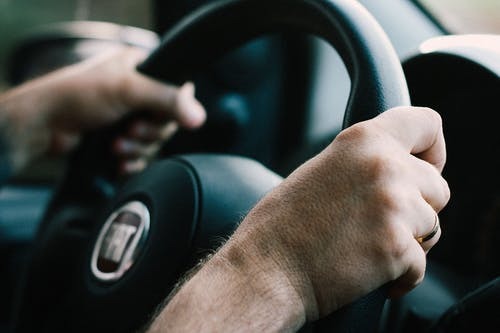9 Manual Driving Test Tips To Ace Your Test
Last updated 27 Apr 2020

You may be a learner driver attempting the driving test for the very first time, or you may be a seasoned driver on a restricted automatic licence looking to upgrade to an unrestricted drivers licence. Whatever the case, as you prepare for your manual driving test there are many things you will need to prepare ahead of time. You need to prepare the relevant documents, get a car sorted out to use on the day of the driving test, and finally you need to brush up on manual driving test tips - that’s why you’re here.
Around one third of Australians fail the driving test. It’s not an easy hurdle to get over. Even for experienced drivers, the experience of re-learning how to drive in a manual car can be difficult - and passing the driving test still requires you to demonstrate that you are able to control the car with close to perfect ability. The addition of yet more factors (clutch pedal, gear stick, and monitoring your car's RPM) make an already difficult process even more difficult.
Many learner drivers will feel nervous about attempting their driving test for the first time, but it can be easy to go into the test feeling overconfident and under-prepared for those that have successfully done it before in an automatic.
The good news however is that it’s definitely possible to pass the driving test in a manual vehicle. By the time you’re attempting the driving test you will definitely have the experience to pass it, but you have to be in the right mindset on the day. In this article we’ll look at some manual driving test tips, as well as a few more generalised driving test tips so you can prepare.
So what are some things you can do to ensure you ace your manual driving test?
1 Arrive a few minutes early
Being punctual is important for several reasons, and can have a significant impact on your performance. You should aim to be at your driving test at least 15 minutes early to give yourself time to prepare, both mentally and practically.
Arriving early gives you time to become familiar with the area, and ensures you don’t begin your driving test in a rush or panicking - you want to go into your driving test with a clear mind and focused on the task at hand.
You will also have more time to prepare your materials and your car before you meet your testing officer, which makes it much easier for them to complete the pre-test assessment and proceed with the driving test itself.

2 Have a driving lesson beforehand
A great way to arrive early and primed for your driving test is to have a regular driving lesson before your driving test. You will already be warmed up and ready to go, and you may be able to gain some final valuable tips from your driving instructor before you attempt to get over the final hurdle and reach your driving independence.
A driving lesson right before your test will also help you get accustomed to the roads where you’re likely to take the test, so you’ll feel more at ease.
3 Use your driving instructor’s car
Booking the use of a driving instructor’s car can be incredibly beneficial for learner drivers who will be familiar with the vehicle and may not have another option readily available for use.
It is often possible to purchase a driving test package which allows you the use of your driving instructor’s car when attempting the test, and also provides you with a regular driving lesson immediately prior to your driving test to help you warm up.
4 Take your driving instructor along for reassurance
While you’re not allowed to receive any driving test tips, advice, instruction, or feedback during your test under any circumstances, you may be allowed to have your driving instructor accompany you during the driving test.
The presence of your driving instructor can help by providing you with a confidence boost, and giving you the reassurance that you’re not alone in taking your next steps.
If for some reason you fail your driving test, your driving instructor will know exactly what went wrong and be able to help you correct your mistakes in any subsequent driving lessons before you attempt the driving test again.
5 Avoid behaviours or actions that may stall your car
With a manual car you run a much higher risk of your car stalling while you drive. Car stalling is most often caused by releasing your clutch too quickly or by failing to use the clutch when slowing to a stop, although there are a number of other instances where your car may stall if your engine RPM drops too low.
The best way to ensure you avoid stalling your car during the driving test is to take your time when applying or releasing the clutch, doing it gradually and smoothly.
If you find you have trouble with your car stalling regularly during your driving practice sessions, then you may want to organise a driving lesson with your driving instructor dedicated to working on slow speed manoeuvres and gear changes before attempting the driving test.
Car stalling is most likely to occur at intersections, roundabouts, hill starts, and other places where the driver is required to make start from a stationary position but under some pressure to start moving quickly - so be sure to work on mastering these before attempting your driving test.
6 Keep your foot away from the clutch unless you need to use it
Driving with your foot on the clutch is strongly advised against under most circumstances, and you may have heard your driving instructor or others refer to “riding the clutch”, the practice of driving with your foot on the clutch resulting in it always being partially engaged.
Riding the clutch is widely considered a bad habit to form and can have serious negative impacts on the performance and handling of your vehicle when driving. You should keep your left foot clear of your clutch not only to preserve the lifetime of your transmission, but you may also be penalised for excessively or unnecessarily applying the clutch during the driving test.
The amount of leeway given for riding the clutch will vary, but you should generally not apply the clutch for more than a few seconds at any time - except for in the case of specific emergencies (such as your accelerator becoming stuck).
7 Brush up on any state specific road rules, skills, and requirements
Be sure to research how the driving test is conducted and assessed in your state (and even in your local area), and find out whether there are any location specific requirements or driving skills that you will be tested for that might be obscure, or that you might not have seen or used frequently.
For a fully licenced driver the majority of Australian road rules are often consistent across the country, and earning your full licence in one state will allow you to drive in any other state without any problems. However, drivers will always be required to drive in accordance with the specific local road rules and laws for whichever state they are currently driving in.
Some individual road rules may vary between states. These differences can range from the number of hours required as a learner driver, to the length and duration of your driving test, to which specific skills and knowledge you will need to display as a driver to gain recognition of driving competency. Driving test tips NSW may not always be suitable for those looking for QLD driving test tips or Victorian driving test tips, for instance.
As an example of one such unique road law and driving skill: learning how to perform a hook turn is specific to Victorian learner drivers (and more specifically to learner drivers in Melbourne), and information covering Vicroads driving test tips is going to be more useful for Victorian learner drivers than QLD or NSW driving test tips will be.

8 Do not stress about minor mistakes
During the driving test you are expected to be capable of maintaining full control of your vehicle at all times, however not all mistakes will cause you to fail instantly.
During a driving test, mistakes are broken up into different classifications of error based on their severity and the threat they pose, and may often be split into common brackets such as “error”, “critical error”, and “instant fail” (although the exact breakdown and names may vary by state).
While you should avoid making any mistakes, it is possible for you to pass your driving test as long as you display a high overall competency level even if you make one or two basic errors.
If you do make a mistake during your driving test, do not ask your instructor if you have failed or plead to have the error overlooked (both will result in immediate fail) - instead, you should continue as normal and receive your grading upon completion of the driving test.
9 Avoid trying to do too much at once
Driving a car requires you to constantly be performing a wide range of actions within the car such as accelerating or braking, indicating, steering, changing gears, and more. While doing these you must still keep your focus on the road ahead and maintain awareness of your surroundings and your vehicle at all times to detect any emerging hazards.
Because automatic cars handle gear changes for you, it’s possible for the car to automatically adjust the speed of your vehicle’s engine as you perform manoeuvres such as changing a lane or turning a corner. In a manual car where gear changes must be made by the driver however, you should perform a gear change either before or after completing the manoeuvre to ensure you maintain safe control of your vehicle and to prevent damaging your engine or transmission.

Hopefully you have found something beneficial from our manual driving test tips. To quickly recap the key points: when preparing for your driving test you should aim to be punctual (or early), well rested, warmed up and possibly have some personal support along to help you .
Be sensible and gentle with your use of the clutch and gear stick, and make smart decisions that allow you to keep your focus on the road and your surroundings. If you make a mistake, it’s not the end of the world - you may still pass, and if you don’t then you can learn from the experience and try again next time.
If you’re ready to book your driving test, check out our driving test packages so you can start your driving test on the right foot. If you’re not sure you’re ready to take on the driving test just yet and you need personal driving test tips or advice on how to improve, then check out our range of manual driving instructors near you today.
To get started, simply enter your postcode into the instructor finder form below, select manual, and compare the range of manual driving instructors in your local area.

About the author
The EzLicence online platform brings transparency, choice and efficiency to booking and managing driving instructors and driving lessons in Sydney, Melbourne, Brisbane, Perth, Gold Coast and Sunshine Coast.